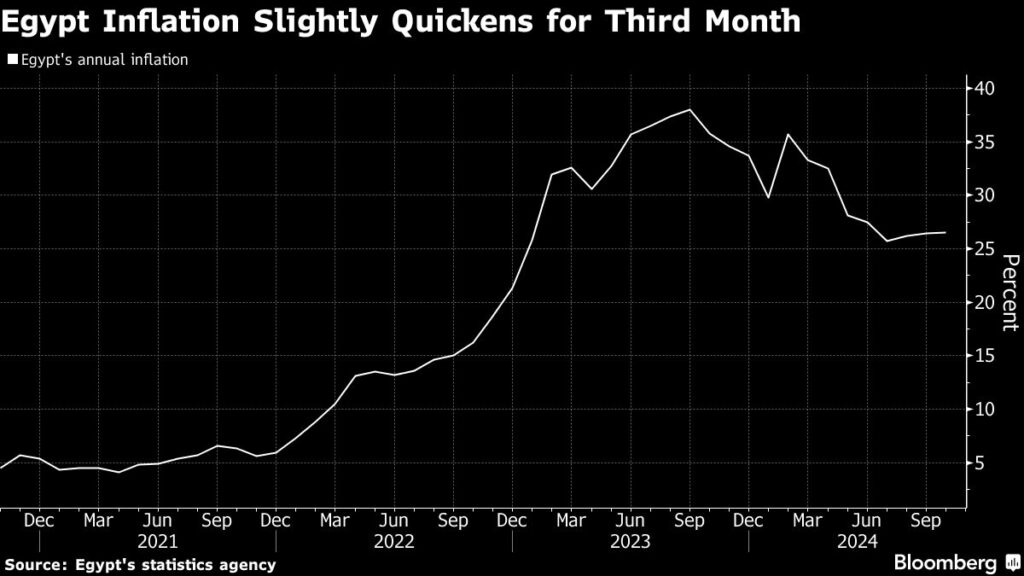Egypt is currently experiencing a slight increase in inflation for the third consecutive month, primarily due to a significant rise in fuel prices. According to the state statistics agency CAPMAS, the annual consumer price index in urban areas rose to 26.5% in October from 26.4% in September. Month-on-month prices increased by 1.1%, down from a more substantial 2.1% the previous month. Food and beverage costs, which account for the largest portion of the inflation metric, saw an annual increase of 27.3%, slightly easing from 27.7% in September. This inflationary pressure is partly attributed to a 9.2% increase in fuel prices implemented in October, marking the third fuel price hike this year. This increase is part of a larger governmental strategy to reduce subsidies and improve fiscal stability, which has resulted in some of the lowest fuel and bread prices globally.
The financial implications of this inflation data could lead the Central Bank of Egypt to maintain its interest rates at 27.25% during its upcoming meeting on November 21, as it has done for the past four meetings. Economists largely predict that the first potential rate cuts will not occur until early 2025, as the inflationary trend is expected to persist into November due to the recent adjustments in fuel prices and the impending increases in tobacco prices from the Eastern Company, Egypt’s largest tobacco producer. Overall, the cost of living in the country is under significant pressure from these rising prices.
To effectively manage its financial burdens, the Egyptian government will need to pursue further fuel price adjustments, estimated between 15% and 20%, to eliminate subsidy funding. This aim falls within a broader fiscal policy framework under an expanded $8 billion agreement with the International Monetary Fund (IMF) reached earlier in the year. Part of this arrangement involves increasing social assistance for lower-income citizens while simultaneously decreasing the budget deficit through subsidy cuts. Earlier actions taken by the government included a drastic quadrupling of bread prices in June and an increase in electricity rates.
Amid these economic challenges, IMF Managing Director Kristalina Georgieva’s visit to Cairo highlights ongoing discussions regarding Egypt’s loan program and potential revisions to economic plans in response to regional instabilities. The government’s call for adjustments in its scheduling reflects the debt pressures it faces due to the economic ramifications of ongoing regional tensions. The location of Egypt bordering Gaza and the dip in revenue from the Suez Canal — partly due to Houthi attacks in the Red Sea — has compounded these pressures.
The upcoming discussions with the IMF team, currently engaged in dialogues with Egyptian authorities, emphasize the necessity for careful economic strategy adjustments. The government is under much scrutiny regarding its policies, which aim not only to stabilize finances but also to mitigate the impact on poorer segments of society, who are particularly vulnerable to fluctuations in essential goods and services. The challenge remains for the government to balance fiscal austerity with social welfare measures amidst a backdrop of rising inflation and economic instability.
In summary, Egypt’s inflation continues to rise, fueled by recent hikes in fuel prices, and economic strategies are being reshaped as the government navigates fiscal reforms under pressure from both local and international economic conditions. The central bank’s policy decisions will be crucial in the coming months as the country endeavors to stabilize its economy while ensuring minimal adverse effects on its population. As regional tensions persist, Egypt’s economic future remains precariously linked to both domestic reforms and international support.

